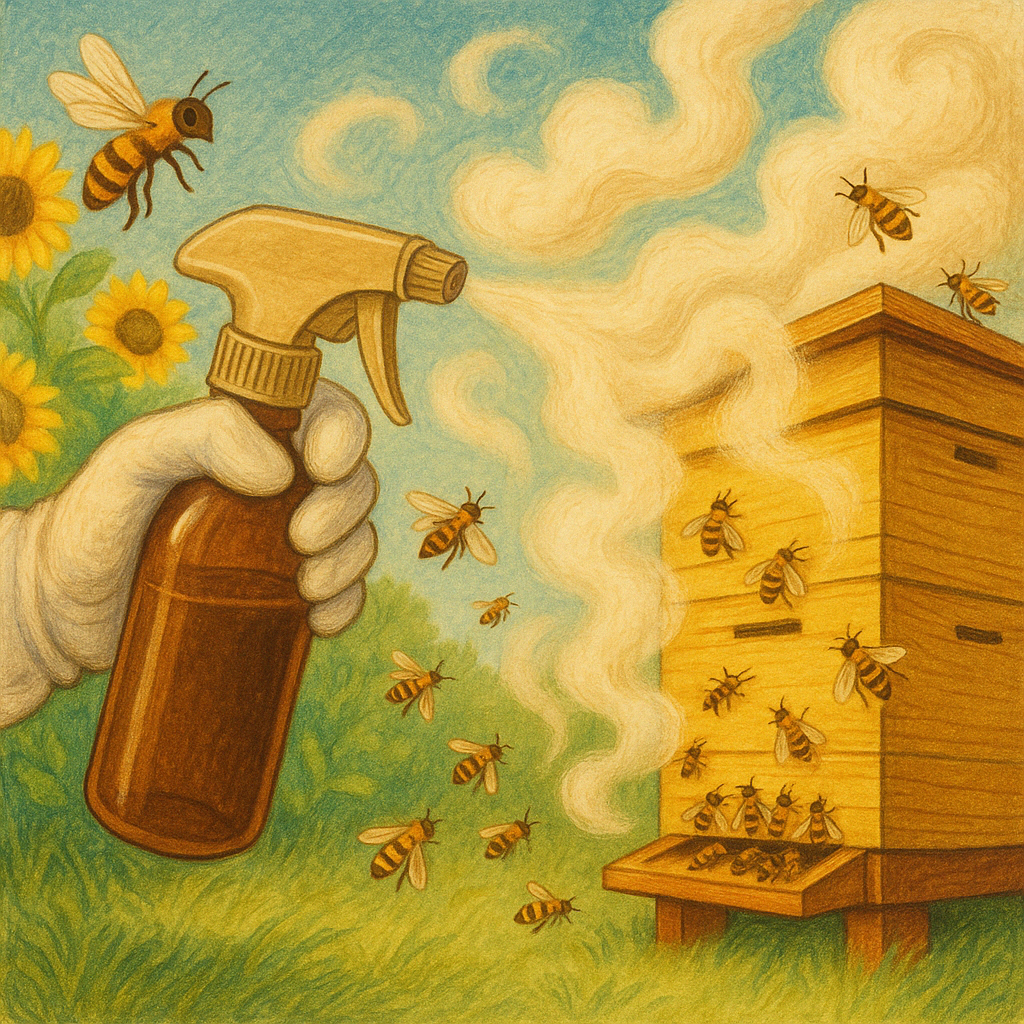
Is Wood Vinegar a Firesafe Smoke Alternative for Beekeppers?
Share
Wood Vinegar Shows Promise as a Sustainable Smoke Alternative in Fire-Prone Regions
In an era marked by rising temperatures and increasing fire bans, the use of traditional smoke methods in beekeeping and horticulture is under growing scrutiny. This has prompted an urgent search for alternatives—particularly those that retain the efficacy of smoke in calming bees or enhancing microbial activity in soils without introducing the risks of open flame. One such alternative, wood vinegar, is now gaining attention as a viable solution.
What Is Wood Vinegar?
Wood vinegar, also known as pyroligneous acid, is a liquid byproduct of biomass combustion in oxygen-limited conditions. It is typically produced through the controlled pyrolysis of wood, bamboo, or agricultural waste such as chicken litter, which yields a condensate rich in organic acids, esters, phenols, and alcohols. This complex mix of compounds gives wood vinegar its pungent aroma and multi-functional properties—making it a unique bridge between plant health, soil science, and apiculture.
The Traditional Use of Smoke in Beekeeping
In beekeeping, smoke plays a critical role in calming honeybee colonies. It disrupts the bees’ alarm pheromones and encourages them to retreat into the hive, consuming honey in preparation for a potential evacuation. However, in fire-prone regions, the use of conventional smokers is increasingly restricted due to bushfire risks and seasonal fire bans—particularly in Australia, the western United States, and parts of southern Europe.
A Non-Flammable Alternative
Wood vinegar, when atomised or gently misted, mimics many of the chemical and behavioural triggers of smoke without requiring combustion. Its volatile organic compounds can still interfere with alarm pheromones, while the acidic vapours lightly agitate the bees’ senses, triggering similar food-gathering behaviours seen with traditional smoke use.
For professional apiarists working under Total Fire Ban (TFB) conditions, wood vinegar provides a non-flammable, legal, and biologically active substitute that can be safely stored and deployed without special permits or firefighting gear.
Soil Health and Microbial Activation
Beyond its role in apiculture, wood vinegar is widely used in regenerative agriculture as a microbial stimulant and soil enhancer. Its low pH (typically 3–5) and rich carbon content support microbial proliferation, promote root growth, and help condition soils—especially when derived from biologically rich feedstocks like chicken litter.
In fire-prone environments where soil microbial activity is often disrupted by drought, heat, and compaction, wood vinegar can help rebuild biological diversity in the rhizosphere. By enhancing nutrient uptake and suppressing pathogenic bacteria, it contributes to both soil restoration and plant resilience.
Environmental and Practical Benefits
-
Fire Safety: No ignition required, eliminating the risk of starting accidental fires in dry conditions.
-
Legal Compliance: Can be used during TFB periods where traditional smokers are banned.
-
Biological Utility: Dual-purpose use across apiculture, horticulture, and agriculture.
-
Shelf-Stable and Portable: Easily stored in small spray bottles or atomisers for field use.
Application Methods for Beekeepers
-
Use a fine mist spray bottle to lightly mist hive entrances before inspection.
-
Avoid soaking the bees—less is more; the strong aroma is enough to elicit the desired effect.
-
Best used in early morning or late afternoon to align with lower bee activity.
Cautions and Considerations
-
Ensure the wood vinegar is refined and pH-adjusted (ideally 6.0–6.5 for bee safety).
-
Avoid products with high tar or heavy oil residues.
-
Conduct a small hive test before broad application to observe colony reactions.
Fire-Safe Future for Apiculture and Agriculture
As climate volatility reshapes how we manage both bees and soil, wood vinegar offers a practical, environmentally sensitive tool for professionals operating in fire-prone landscapes. Whether used to safely calm bees or recondition soil microbiomes, this ancient material—now refined through modern science—may well become essential in tomorrow’s regenerative toolkit.
